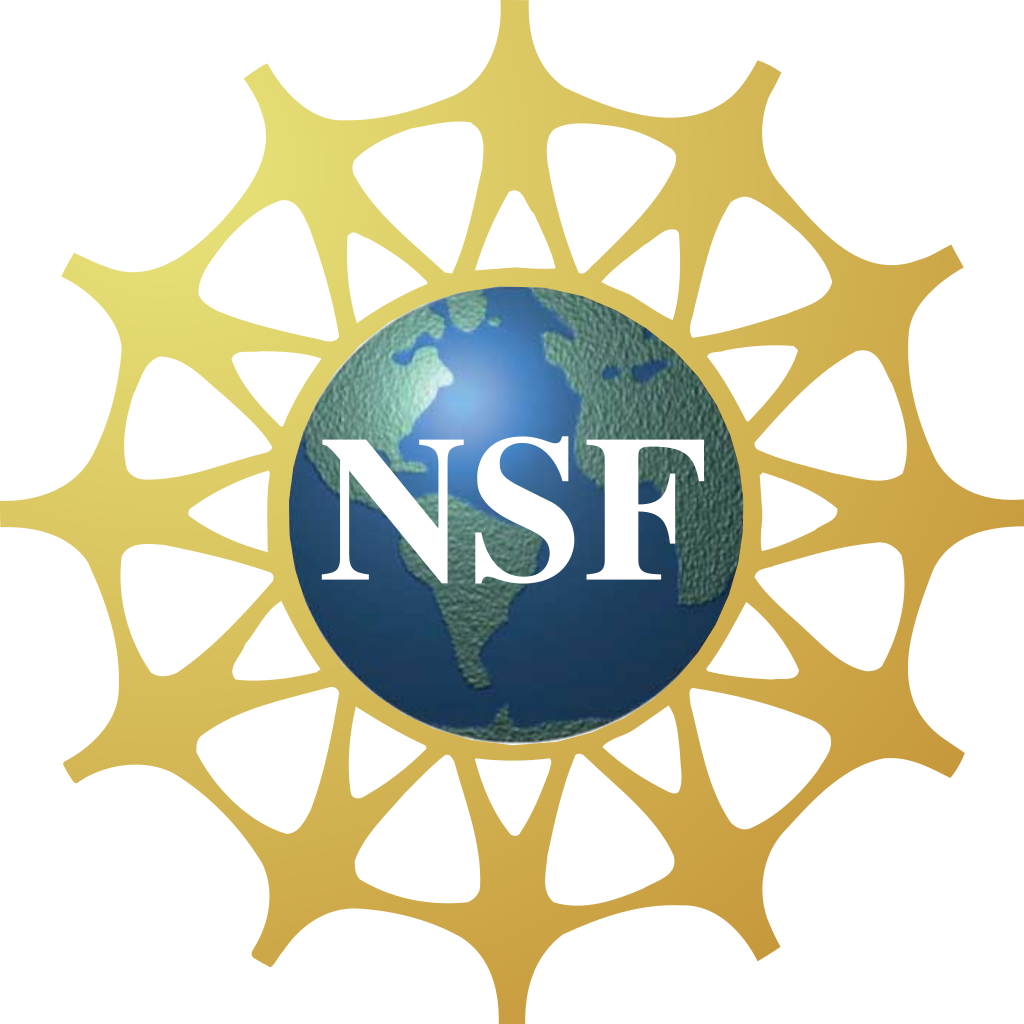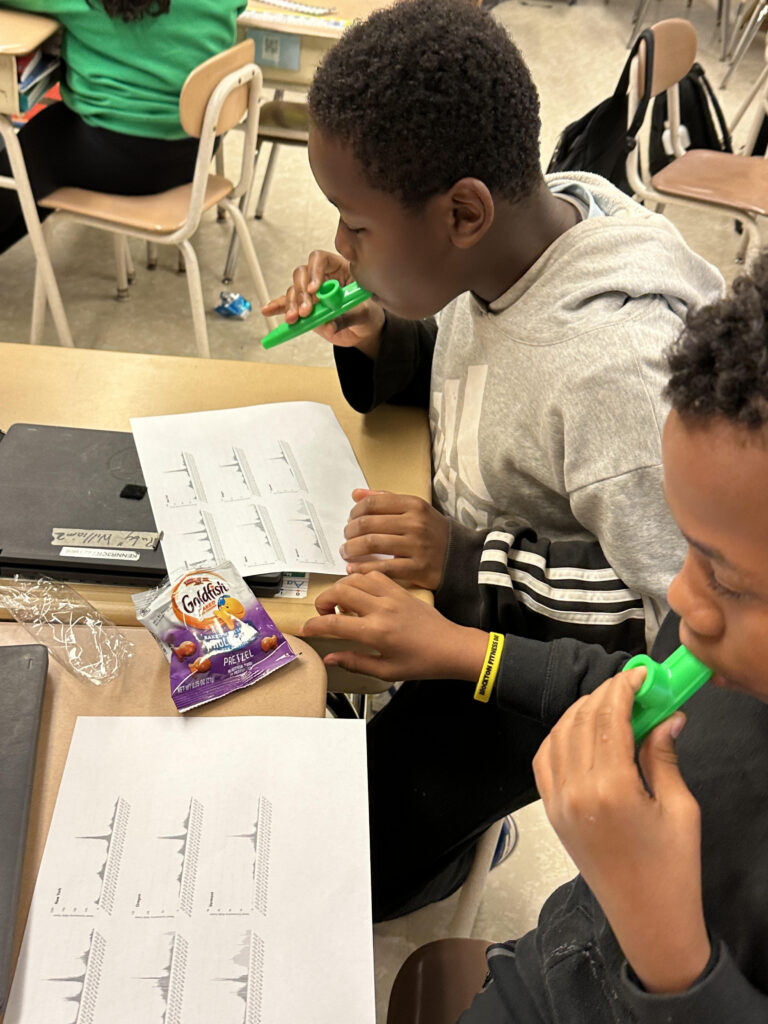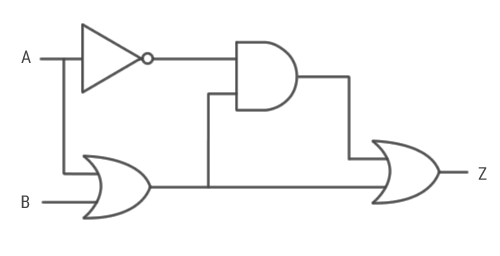Research
Tumblehome, Inc. is a pioneering organization deeply committed to advancing STEM education research. With an unwavering dedication to fostering a love for science, technology, engineering, and mathematics (STEM) among students, Tumblehome, Inc. actively explores the pedagogies and practices that effectively support students in their learning journey and help them sustain long-term interest in STEM subjects. Through rigorous research initiatives, Tumblehome, Inc. conducts both federally and privately funded research to identify the most effective and inclusive teaching methods, engagement strategies, and curricular designs that resonate with students and promote their active involvement in STEM disciplines. By investing in this vital research, Tumblehome, Inc. aims to enhance the quality of STEM education and empower students to become the next generation of innovators, problem-solvers, and critical thinkers. Examples of our recent research projects:

NSF Funded:
Project CIDSEE
For further information about CIDSEE on the NSF website
Covid-Inspired Data Science Education through Epidemiology (CIDSEE)
Goals
The goal of this project is to empower underserved middle school youth to use scientific data and data tools to better understand epidemiology. Participants are developing data fluency, skills in using data tools in an innovative way to track the spread of infectious disease, an understanding of how to ask and address their own questions of datasets, and confidence in their ability to study urgent epidemiological challenges. The project aims to:
1. Increase youth confidence, interest, knowledge, and skills in using datasets and data tools (such as the Common Online Data Analysis Platform (CODAP) and an “audible” version of CODAP) to address questions about and understand pandemics like COVID-19.
2. Spark youth interest in the data-driven work of epidemiology and affiliated STEM occupations, including research, modeling, data analysis, and science communication.
3. Disseminate the program to at least 800 youth, primarily through Imagine Science (in affiliation with STEM Next and its youth-serving partners.
Approach
The COVID-Inspired Data Science Education through Epidemiology project has developed ten sessions for youth as part of 15-20 hour out-of-school “Data Detectives Clubs.” Middle school students read an adventure book written by Co-PI Noyce, The Case of the COVID Crisis and engage in related data activities using CODAP and NetLogo.

The adventure story follows two middle school students, Clinton and Mae, as they travel through time on a mission to learn about pandemics of the past and present. Youth learn from the adventures of these time travelers that others have also suffered through disease outbreaks, often without the tools—testing, vaccines, medications—that science offers today. The Case of the COVID Crisis presents an accurate portrait of efforts to conquer smallpox, the 1918 flu, measles, Nipah, Ebola, and COVID. Equal parts discovery, danger, math, and science, the story portrays diverse scientists in places as far apart as the U.S., Bangladesh, Brazil, and the Congo.
But the story of COVID-19 is best told through more than words. Data tell their own story, and there has never been a pandemic more steeped in data. COVID data are fine-grained and available in near real time from the Centers for Disease Control (CDC), the World Health Organization (WHO), and others. To create curated datasets and data exploration activities for Data Detectives Clubs, Tumblehome partnered with the Concord Consortium.
Together, we built a plugin for CODAP that connects to current data from the CDC. Students can download datasets with both categorical and numerical data about COVID, including number of cases and vaccinations by state and county. They can transform data tables into graphs by dragging and dropping variables onto the horizontal and vertical axes. Students can make additional data moves by creating nested, hierarchical data, such as by country, state, and city.
We are also encouraging youth to listen to graphs of time-series disease data by playing kazoos and by embedding in CODAP “audible” graphs of time-series data about diseases including smallpox and COVID. By using multiple approaches—including visualizing data, telling stories about data, and sonifying data—we hope more youth will become deeply engaged in learning about data and have fun in the process.

Evaluation and Research
Demographics:
Key to our success in recruiting 4th through 8th grade youth to the program has been the partnership with Imagine Science/STEM Next, a network encompassing 4-H, the Y, Boys and Girls Clubs of America, and Girls, Inc. These youth-serving organizations have joined forces to bring the program to the hardest-to-reach youth in nine cities and regions. Youth demographics were as follows: 26% Latinx/Hispanic, 19% African American, 14% white/non-Hispanic Caucasian, 11% multiracial, 8% Asian/Asian American, 2% Native American, 1% Middle Eastern, and 52% girls vs. 43% boys. Further, 38% of the youth served came from homes where the primary language is not English.
Survey Research:
A survey developed by PEAR, the Common Instrument Suite (CIS) (Noam, Allen,
Sonnert, & Sadler, 2020), was administered to a total of 398 middle school youth in the first two years of the project. The scales focus on STEM engagement, STEM identity, and STEM career interest. In addition, 14 customized questions were added to study engagement, identity, career and general interest in data science and epidemiology topics specifically as well as attitudes towards reading and community impact of data science.
Results showed that youth reported statistically significant positive changes on all three scales and positive changes on all 14 custom items. Positive results also exceeded those in the national CIS survey on all scales. There were no differences within age, grade, gender, hours of participation, or race and ethnicity.
Research on Learning:
Research focuses on the impact of the project on students’ learning about time-series data as they use CODAP to explore datasetsabout COVID. Intensive individual interviews have been conducted with nine students, examining how they make, describe, and interpret time series graphs, how they think about slope, and how they understand rate.
Funder
National Science Foundation, DRL Award #2313212. Any opinions, findings and conclusions or recommendations expressed in these materials are those of the authors and do not necessarily reflect the views of the National Science Foundation.
Tumblehome Staff
Dr. Jan Mokros, Principal Investigator
Dr. Pendred Noyce,Co-Principal Investigator
Dr. Laura Martin, Senior Researcher
Dr. Jacob Sagrans, Senior Research Associate
Barnas Monteith, Developer
Partners
Concord Consortium: Bill Finzer, Co-Principal Investigator
Imagine Science:Nav-Deol Johnson, Network Manager
Strategic Learning Partners for Innovation (SLP4i): Dr. Katrina Bledsoe and Blanca FlorGuillén-Woods, evaluation
Partnerships in Education and Resilience (PEAR): Kristin Lewis-Warner, evaluation
Jackson Laboratory: Dr. Charles Wray, career education development
STEM Next: Teresa Drew, stakeholder dissemination
Selected Publications and Presentations
COVID-Inspired Data Science Education through Epidemiology (CIDSEE) project. (2023). Data Detectives Club: Guide for Program Leaders. Request the guide at: https://bit.ly/3UFtyna.
Martin, L., Mokros, J., Deol-Johnson, N., Noyce, P., & Sagrans, J. (2022). Data Detectives Clubs: A collaborative approach to data science through epidemiology. Connected Science Learning, 4(6). https://www.nsta.org/connected-science-learning/connected-science-learning-november-december-2022/data-detectives-clubs
Mokros, J., Noyce, P., & Martin, L. (2022). Data Detectives Clubs: COVID-Inspired Data Science Education through Epidemiology. Poster presented at the American Educational Research Association Annual Meeting, April 21, 2022, San Diego, CA. https://drive.google.com/file/d/1cKtbb5vMWpajPpABnn2p3Mph9_uj2lYO/view
Mokros, J., Sagrans, J. & Noyce, P. (2021). Data science for youth in the time of COVID. In R. Helenius& E. Falck (Eds.), Statistics Education in the Era of Data Science. Proceedings of the Satellite Conference of the International Association for Statistical Education (IASE), Aug-Sept 2021, Online Conference. https://www.doi.org/10.52041/iase.hmtse
Noyce, P. (2022). The Case of the COVID Crisis (2nd ed.). Tumblehome. https://tumblehomebooks.org/book/the-case-of-the-covid-crisis/
Noyce, P., Mokros, J., &Finzer, W. (2023). Data Detectives Clubs: Narrative, data, and sound. @Concord (Concord Consortium Newsletter). https://concord.org/newsletter/2023-spring/data-detectives-clubs-combine-narrative-data-and-sound/
Noyce, P., Mokros, J., Martin, L., & Sagrans, J. (2022). Integrating technology and narrative to engage young adolescents with COVID data. In S. A. Peters, L. Zapata-Cardona, F. Bonafini, & A. Fan (Eds.), Bridging the Gap: Empowering and Educating Today’s Learners in Statistics. Proceedings of the 11th International Conference on Teaching Statistics (ICOTS11 2022), Rosario, Argentina. International Association for Statistical Education. https://www.doi.org/10.52041/iase.icots11.T2I3
Project Puffin
For further information about Project Puffin on the NSF website
Puffins: Exploring how narrative, data science, and artificial intelligence enhance the study of ecology in middle school
Funder
National Science Foundation, DRL Award #2241777. Any opinions, findings and conclusions or recommendations expressed in these materials are those of the authors and do not necessarily reflect the views of the National Science Foundation.
PI: Janice Mokros, PhD, Senior Research Scientist, Tumblehome
Co-I: Donald Lyons, PhD, Director of Conservation Science, National Audubon Society;
Co-I: Pendred Noyce, MD, CEO, Tumblehome
Senior personnel: Barnas Monteith, President, Tumblehome Learning; Jacob Sagrans PhD, Senior Research Scientist, Tumblehome
The goal of the project is to explore how data science, combined with a compelling narrative (The Puffin Plan by Stephen Kress and Derrick Jackson) enhances the study of ecology. Over 500 students from four Maine middle schools will examine trends and correlations in several decades of Audubon data about puffins, noting relationships among sea surface temperature, hatch island, fish in the puffin diet, fledging weight, and survival to breeding age. Students will use the free Common Online Data Analysis Platform (CODAP) (Concord Consortium, 2022) for this work. Students will also use nontraditional data from webcams and sound recordings to study puffins behavior. They will train an artificial intelligence (AI) system to distinguish among three puffin vocalizations and examine how patterns of puffin calls correlate with other aspects of puffin behavior. They will interact with a diverse group of former interns who have worked on the puffin islands to learn how data are being generated and used to study ornithology and climate change. Finally, students will set up their own webcams on schoolgrounds to study bird behavior. Three teachers, who have expertise in curriculum design, working with ESL students, and ornithology, will co-design the program, working with experts in data science education, AI, ornithology, and ecology.

LogicDS
For further information about LogicDS on the NSF website
Collaborative Research: Fostering Virtual Learning of Data Science Foundations with Mathematical Logic for Rural High School Students (Logic Data Science / LogicDS)
Funder: NSF DRL Award # 2201393 (Tumblehome subaward) Any opinions, findings and conclusions or recommendations expressed in these materials are those of the authors and do not necessarily reflect the views of the National Science Foundation.
Tumblehome Research Staff:
Barnas Monteith, Tumblehome Co-PI
Janice Mokros, Senior Researcher
Partners: Texas Tech University, University of Florida, Concord Consortium
About LogicDS
Tumblehome’s role in LogicDS is to aid in curriculum development, lead teacher professional development as well as the creation of motivating context in the form of modern, engaging datasets that are focused on topics of interest to youth. At the same time, this context is being designed to incorporate AI, machine learning and in particular, is grounded in the Python programming language and basic CS Logic. Using R, Python and examples from other environments (such as CODAP), students learn a combination of data science math, programming basics and foundational logic skills that can be applied to virtually any field of computing.
Goals
The LogicDS curriculum introduces virtual high school students to the exciting field of data science and related careers, with a particular focus on AI and machine learning. This curriculum aims to address the educational barriers faced by rural students, who often have limited access to advanced STEM courses and qualified teachers.
The curriculum’s core concept is to unify the foundations of data science in computing, mathematics, and statistics through mathematical logic. By contextualizing these subjects in real-life, data-rich problems, students can better understand the connections between statistics and computing, making data science more accessible and reducing cognitive load.
The project follows a design-based research paradigm, directly impacting approximately 1,000 students. It utilizes microgenetic analysis to study the underlying mechanisms of student learning in the context of the new curriculum. Additionally, an experimental study is being conducted to compare the impact of the LogicDS curriculum versus Texas and Florida state-standard DS/CS curricula on students’ learning of computing, mathematics, and statistics and how the LogicDS methodology influences their learning outcomes.

Other Funding Sources:
Project BRAINY

Project BRAINY, a partnership between the Institute for the Study of Resilience in Youth at McLean Hospital and Tumblehome, was launched in 2022 with a challenge grant from the Alden Trust. In response to the problem of learning loss and disengagement from school following the pandemic, BRAINY offers middle school students a 10-session, 15-hour afterschool or summer curriculum that combines reading, hand-on science activities about the brain and closely coupled exercises in social-emotional development (SED). The curriculum follows a Tumblehome adventure book called The Baffling Brain. After a pilot in East Boston in the spring of 2023, BRAINY will run in six summer programs in Boston during the summer.
Gil Noam of ISRY and Penny Noyce of Tumblehome lead Project BRAINY. For further information about how to participate, contact Sabie Marcellus ([email protected]).
Along with CIDSEE, BRAINY represents Tumblehome’s interest in offering a suite of four programs combining STEM and story with SED. These first two programs address two areas of STEM: math (Data Science and Graphing) and science (Elementary Neurobiology).
Project EDGE
Internally funded, EDGE represents a partnership among Tumblehome, Vanderbilt University and ISRY to offer a ten-session afterschool engineering program to middle schoolers and especially girls. Combining engineering challenges with opening and closing circles that address key 21st-century skills, EDGE is undergoing a pilot study in six states of its first five lessons during the summer of 2023.
Project AIMaS / QUAIL3.0
Funded through prototype phase by the Cornell Legacy Fund, this project is a collaboration between Tumblehome, University of Virginia and the Dundee Township Illinois Boys & Girls Club to build a novel arts-based curriculum focused on today’s latest CS technologies. This new curriculum is an extension of an earlier project, QUAIL 3.0 (formerly BRAINCHILD, developed by Tumblehome’s Barnas Monteith) designed to teach children about some of the most fun and engaging aspects of modern artificial intelligence. New national efforts to rebuild the semiconductor sector, as well as a new focus on QISE (Quantum) technologies, have led us to combine these future technologies into a single intervention, showcasing the latest and greatest in computing tech. Our goal is to introduce students to fun hands-on activities that relate to these new technologies and the sorts of careers that might be available to these students later in life. Focused on upper elementary and middle school ages, the curricula is action-packed and pedagocially ties together the concepts between hardware and software that enable today’s coolest AI, metaverse, gaming and other tech. Pilots will run in Fall 2023, and will scale throughout the Boys and GIrls Clubs of America in 2024 and beyond.
- To learn more about our research staff, please visit About Our Organization.